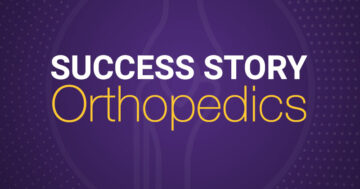How Much Is Your EHR Costing You?

Here are 10 signs that your EHR isn’t holding up its end of the bargain
What has your EHR done for you lately — financially, that is? To answer this question, you’ll need to take a look at various aspects of your software — from where it’s housed to what it can do. If your system is inefficient or difficult to use, it could be costing you more than you think. Here are a few signs you might need a new EHR.
Table of contents
1. You’re working late on visit notes — again
2. Your EHR isn’t designed for your specialty
3. You have an on-premise server instead of a cloud-based system
4. You aren’t getting the software updates you need
5. You have to connect multiple systems together
6. You struggle to satisfy MIPS reporting requirements
7. You’re losing money and wasting resources on coding
8. You can’t track or prevent patient no-shows
9. You’re collecting patient feedback manually
10. You’re not getting the financial data you need
1. You’re working late on visit notes — again
If you’re adding notes into your software after hours, there’s a reason for that. You’re probably working less efficiently than you could.
To find out why you’re spending so much time documenting after hours, why not put together a list? Fill it with all of the things that are literally keeping you up at night. Then, set up a call or meeting with your EHR vendor.
Best case scenario: You and/or your office need additional training on an EHR feature that could save you time. Hey, it happens, and your office will be better for it.
Best case scenario #2: Your EHR vendor needs to add functionality to your system, and they are able to provide a timeline for doing so.
Worst case scenario: You need to switch EHR vendors to get the kind of user experience you want and deserve.
Best case scenario (after dealing with the above worst-case scenario): You need to switch to that new EHR vendor that has your office up and running with a seamless experience in no time.
2. Your EHR isn’t designed for your specialty
Many practices sign up for one-size-fits-all software thinking that a fully customizable solution is what they need. Then, they uncover the hard truth: there is such a thing as too much customization.
Your EHR should have specialty-specific medical knowledge built in from day one. Not only does that ensure that your practice can get up and running quickly, it makes the system as a whole much easier to use. After all, it was built by practicing physicians for physicians. That means many of your workflows, your preferences and your frustrations may already be taken into account.
And, if your system is infused with adaptive learning technology (like ModMed’s EMA®) all of that specialty-specific content is only going to get better with time. It will learn to suggest the options you use most, adapt to your workflows, and recall your personalized protocols. With all of these efficiencies built-in, you may be able to see more patients — or take time back for yourself.
3. You have an on-premise server instead of a cloud-based system
If you have a physical EHR server on your premises, it’s costing you money. The question is — how much? These costs are usually associated with:
- Renting or buying a physical server (that will eventually require replacement)
- IT support and maintenance (in-house or outsourced)
- Risk management and redundancy planning
- Adding more physical servers when it’s time to scale
- Possible interoperability and mobility issues
Cloud-based software is housed on a virtual server and has these potential cost-saving benefits:
- Automatic updates
- Little to no IT support
- Redundant EMR storage
- Virtual servers can be added in minutes — so get ready to scale!
- Improved interoperability and mobility
Your next step: Add up the costs and compare. You may be surprised at the results.
4. You aren’t getting the software updates you need
Didn’t you get the memo? It turns out your EHR vendor has decided not to do software updates anymore. What about those new ICD codes and proposed rules that govern interoperability? They weren’t prepared for those either. And now, neither is your software.
To avoid situations like these, you’ll want to do more research up front. Any EHR vendor you consider should be financially solvent and forward-thinking. You want a company that’s committed to making their software better — continuously — with regular updates and new features that make your life easier.
5. You have to connect multiple systems together
Even if you’re satisfied with your current EHR software, if it doesn’t play well with your practice management, billing or patient collaboration solutions, how efficient can you really be?
Sure, bridges can be built (usually) and multiple logins are possible, but how many windows do you want to have open during a patient visit? And how much duplicate data entry do you want to do, when you find out your critical data is moving more slowly across that bridge than you expected, creating unnecessary delays and bottlenecks?
An all-in-one solution can help reduce the extra logins, clicks, cross-referencing and double-checking. It brings together specialty-specific clinical knowledge, scheduling, document management, billing, coding, claims, patient payments, patient collaboration and more to increase practice efficiencies and improve interoffice communications. With all the time you could save, you can put more of the focus back on your patients.
6. You struggle to satisfy MIPS reporting requirements
Is MIPS reporting a challenge for you? Your EHR could be part of the problem. Some systems have limited functionality and capture data inconsistently, leading to inaccuracies, incomplete information and difficulties complying with reporting requirements.
A more robust EHR can simplify your MIPS reporting. Support your reimbursement potential with a system that automatically collects relevant data and provides real-time performance dashboards. This lets you easily track your progress throughout the year and focus on areas to improve.
You may also benefit if you can work with a MIPS advisor — advisory programs may be offered by your EHR vendor. An advisor can help build your custom MIPS project plan, walk you through executing it, and provide guidance and support along the way.
7. You’re losing money and wasting resources on coding
Is your software making billing and coding easier? Some systems can’t capture all the details of a patient encounter or share the right data with your billing team. Others may not be updated with the latest codes.
Still underbilling to avoid denials or using extra resources to address denials? When EHR systems are regularly updated according to new coding guidelines and generate suggested notes and codes based on your clinical documentation, it simplifies the entire billing and coding process, and helps you save valuable time.
8. You can’t track or prevent patient no-shows
Missed appointments are missed revenue. Do you know how much you’ve lost due to no-shows? Sometimes, patients really can’t make it, but you may be able to improve engagement and reduce no-shows with an EHR that supports patient collaboration.
When your EHR is connected to patient collaboration solutions, it’s easier to track and prevent no-shows. Look for a system that lets you automate reminders so patients don’t forget about appointments. Send appointment instructions and forms in advance to help patients prepare, and automate charges for missed appointments. If patients don’t make it to their appointments, you can even send system-generated reminders to reschedule.
9. You’re collecting patient feedback manually
There may be simple things you can do to improve patient collaboration and retention at your medical practice. If you can’t collect feedback easily, you might never learn what those easy fixes are.
An EHR with built-in patient collaboration lets you share and collect information from patients to evolve your practice’s operations and offerings. The insights you gain from this information could help your practice grow, attracting new patients and keeping the ones you have for the long term.
10. You’re not getting the financial data you need
When your EHR isn’t fully integrated with your practice management and analytics software, it can be difficult to monitor where you’re spending money, making money, and losing money.
An integrated solution may use structured data to bring relevant data points together, generating graphs and reports that give you a bird’s eye view into your practice’s financial health. From here, you can use advanced filtering capabilities to gain more visibility into virtually every stage of your revenue cycle.
After all, medicine isn’t just your passion, it’s your business.
Not sure if your EHR is holding up its end of the bargain? Consider switching to ModMed. With specialty-specific EHRs, designed by physicians for physicians, our software can help streamline your practice’s workflows and uncover opportunities for savings and growth. Book a demo now.
This blog is intended for informational purposes only and does not constitute legal or medical advice. Please consult with your legal counsel and other qualified advisors to ensure compliance with applicable laws, regulations and standards.
-







